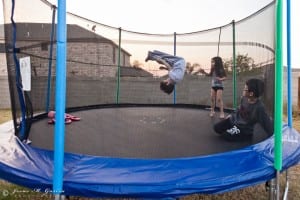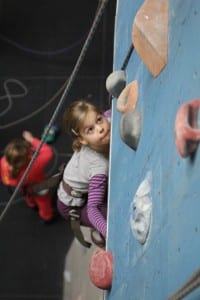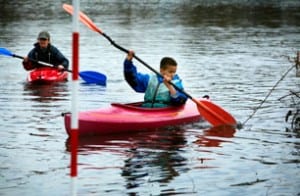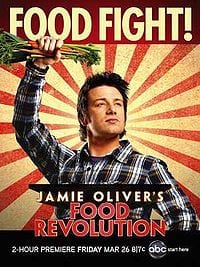Ever wondered why most kids don’t enjoy doing exercise? Maybe because it doesn’t involve the TV! But it can involve their friends, and just generally having a good time.
Maybe it’s time to get your child invloved in some kind of activity or club. So, to make your job easier, we’ve found our top six activities we believe your children will love, and it will keep them fit and health – without them noticing!
Mixed Martial Arts
 Mixed martial arts is one of the fastest growing sports in the world and is becoming increasingly popular amongst children as a way to stay fit and healthy.
Mixed martial arts is one of the fastest growing sports in the world and is becoming increasingly popular amongst children as a way to stay fit and healthy.
Paul Smith, a coach from S2C8 Martial Arts Centre, in Lincoln, Lincolshire beleives that MMA is an extremely affective and fun way for your children to stay fit.
At S2C8 the children’s programs are split into two age groups. From five to eight years old, children can join their ‘Little Dragons’ class, and from nine to fifteen years old, the children have the option between ‘Cadets Kickboxing’ and ‘Cadets MMA’ programs.
“Our classes are extremely popular, we have recently had to add additional classes to cope with demand. When designing our Cadets MMA program, we looked at exactly what we thought was appropriate to teach to children aged nine to fifteen. We therefore do not teach our Cadets head controls, chokes or submissions of any kind, because we cannot guarantee it would be 100% percent safe. If something is not 100% safe we don’t do it. We guarantee our classes are fun, educational and a good work out, and we take no risks with the safety of our students.”
 Trampolining
Trampolining
Everybody loves to bounce, and the younger your children start bouncing, the better!
In a very short period of time you will be amazed at their new skills and development, as trampolining is a good all round exercise which will help with your childs balance, improve their co-ordination, and will give them a cardio-vascular workout.
Trampolining lessons are available at some clubs and leisure centres, so it is sometimes recommended that you take your child to one of these sessions first, just to make sure that they enjoy it, before you splash out on a trampoline for the back garden!
So, if the weather is nice, and your child isn’t sitting in the house watching TV, then you will probably find them outside, bouncing up and down, on their new favourite apparatus.
Horse Riding
 Horse riding is an enjoyable, low intensity form of exercise which is a fun and excting way for children to stay fit and healthy.
Horse riding is an enjoyable, low intensity form of exercise which is a fun and excting way for children to stay fit and healthy.
Sam Whale, from the British Horse Society feels that riding is definitely a good way to keep you and your child fit, “Horse riding is an aerobic activity, usually involving moderately low intensity of exercise for long periods of time,” says Whale. “You will burn up calories, and use major muscle groups such as the abdominals, obliques, gastronomies, and thigh muscles”.
The recommended age to start horse riding is around 7 years old, but don’t worry if your child is younger and wants to learn to ride, many riding schools offer lessons for those younger.
This is good, as the earlier a child gets introduced to horses, the sooner they will feel comfortable around them, it will also teach them basic safety measures, such as never standing behind the horse.
This means that by the time they start to learn to ride, they will have an inherent understanding of why horses can be dangerous.
 Rock Climbing
Rock Climbing
Rock climbing is a hobby which can take many forms, from indoor climbing, outdoor climbing, ice climbing, there are lots of roots for natural progression if a child is talented and wants to pursue climbing further.
It’s also brilliant for those children who just want to take part and have fun.
The Showroom, in Lincoln is home to Lincolnshire’s highest climbing wall, and they run regular children’s clubs. Lyndsey Hannam, the Communications and Marketing Officer at The Showroom beleives that climbing is a fantastic way for young children to stay active, “Our climbing lessons are structured with a mixture of climbing games and wall work. We find that climbing is a real help for children suffering with low confidence or self-esteem. Reaching a certai height is a real achievement and can really give young children a confidence boost”.
Canoeing and Kayaking
 The great thing about canoeing and kayaking is that there is no given minimum age limit.
The great thing about canoeing and kayaking is that there is no given minimum age limit.
For young children, lifejackets are often more readily available than buoyancy aids and are more suitable if your child does not swim well, so you don’t need to worry about them falling in.
Tandem Sit-On-Top (SOT’s) kayaks are extremely ideal for kids, as they can clamber all over them and there’s no danger, or unnecessary fears, about getting trapped. They are simple, easy to use, and SOT’s can be a lot of fun.
Canoes, and Sit-On Top kayaks are ideal for taking the youngest members of your family on the water for the first time.
They can provide a safe and fun way for the whole family to enjoy local waterways and experience some fantastic adventures together, whilst keeping fit at the same time – as someone has to use the oars to stear, how else would you get anywhere?!
 Frisbee
Frisbee
People forget how much fun playing with a frisbee is and the physical benefits from tossing around a disc.
You can get a game of Ultimate Frisbee going, head to a disc golf course, or just throw it around amongst the family. Either way, you are guaranteed to get some exercise.
With the non stop running about trying to catch the frisbee your child will burn a lot of calories, whilst at the same time, building on their agility and balance.
One great thing about a game of frisbee is that it can be played more-or-less anywhere and doesn’t take a long time to set up.
They can play frisbee with you in the garden, you can take them to the park, they can play a quick game with their friends, or even with the dog!
Hayley Cook from the Lincolnshire Sports Partnership says, “Frisbee is a an ideal activity because children do not realise that they are exercising”.









